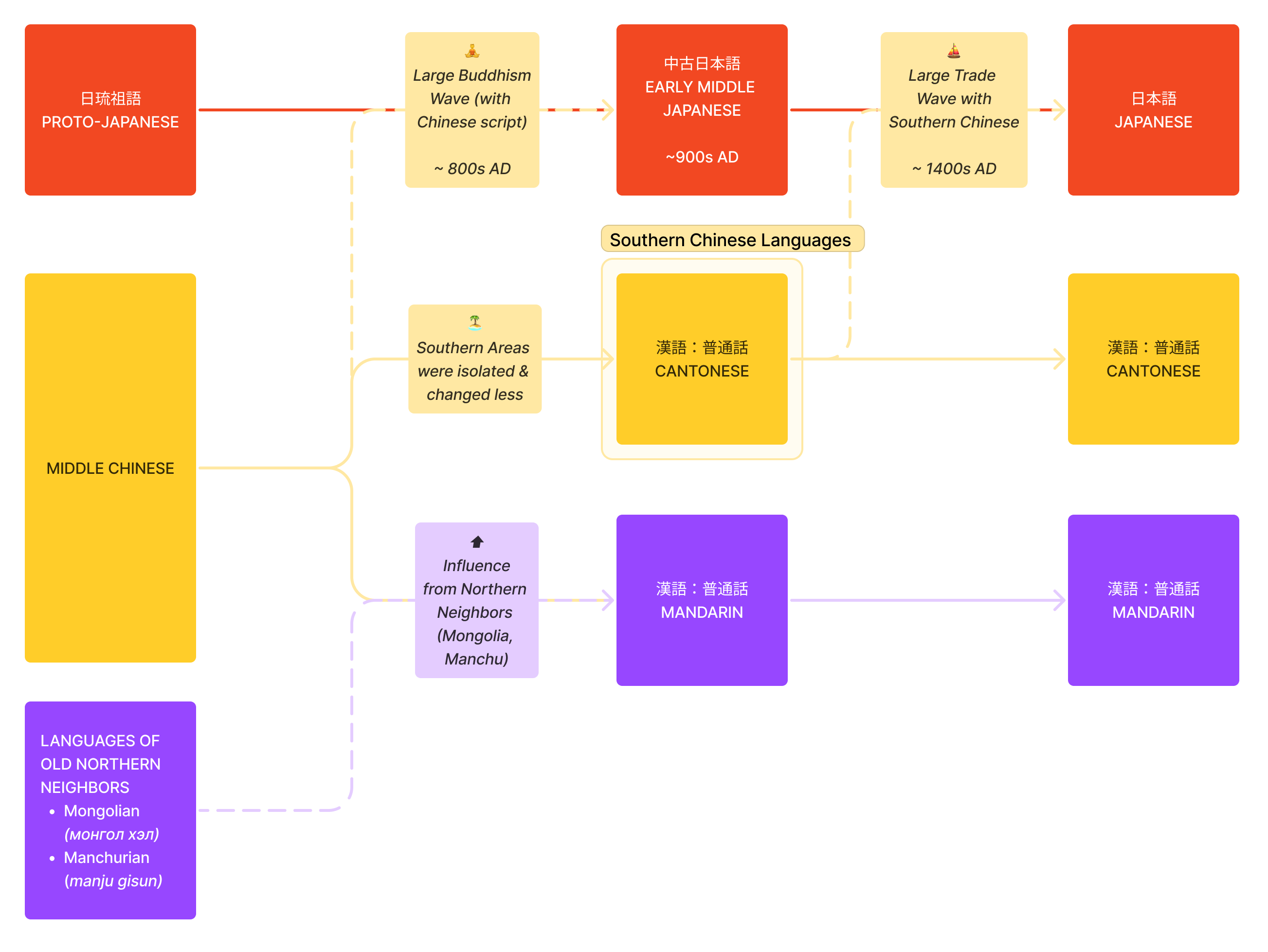Japanese words can sometimes sound similar to Cantonese words. This isn’t just a coincidence. There are historical reasons that they sound similar.
First of all; Japanese, Cantonese, and Mandarin are their own languages and are not mutually intelligible. They each have different grammar, and a speaker of one language can not understand the speaker of another. However, they do occasionally share similar-sounding words.
Here are a few examples of words that sound similar in Japanese and Cantonese:
| Emoji | English | Japanese | Romaji | Cantonese | Jyutping |
|---|---|---|---|---|---|
| 🌏 | World | 世界 | sekai | 世界 | sai3 gaai3 |
| ﹝😌(1+1=?)﹞ | simple | 簡単 | kantan | 簡單 | gaan2 daan1 |
| 🕰️↠ | future | 未来 | mirai | 未來 | mei6 loi4 |
| [🧮] | calculation | 計算 | keisan | 計算 | gai3 syun3 |
| 📍⨀ | middle | 中間 | chūkan | 中間 | zung1 gaan1 |
| →🧳👍 | prepare | 準備 | junbi | 準備 | zeon2 bei6 |
| 📍🏛️📚 | library | 図書館 | toshokan | 圖書館 | tou4 syu1 gun2 |
| 🕰️ | time | 時間 | jikan | 時間 | si4 gaan3 |
| →🚶➡️ | to go for a walk | 散歩 | sanpo | 散步 | saan3 bou6 |
| ☕️ | tea | 茶 | cha | 茶 | caa4 |
| 🍵 | green tea | 緑茶 | ryokucha | 綠茶 | luk6 caa4 |
| 🍉 | watermelon | スイカ | suika | 西瓜 | sai1 gwaa1 |
| 📱 | phone | 電話 | denwa | 電話 | din6 waa6 |
| 🩷 | love | 愛 | ai | 愛 | oi3 |
| ⏱️m | minute | 分 | bun | 分 | fan1 |
| 🧑⚕️ | doctor | 医者 | isha | 醫生 | ji1 sang1 |
(Note: Japanese Kanji and Cantonese Honzi scripts can differ slightly. Cases where the Kanji and Honzi differ are highlighted in brown.)
Why do Japanese and Cantonese words sometimes sound the same?
The short answer is that modern Japanese was influenced by both Middle Chinese (through ~800 AD Buddhism) and Southern Chinese languages (through ~1400 AD trade). Southern Chinese Language like Cantonese were historically isolated, deviating less from Middle Chinese than Mandarin. As a result, languages like Cantonese can sometimes sound closer to Japanese.

The long answer is that, languages evolve over time and are constantly influenced by other langauges. Loan words are an obvious examples of this, like 🚌bus (バス(ba-su) in Japanese, and 巴士(ba-si) in Cantonese). Sometimes we don’t even know words are loan words (e.g. Did you know 🍫“chocolate” in English comes from the French word “chocolat”? The English word then influenced the Japanese word “チョコレート”.).
The Japanese language had two significant waves of influence from China:
- 🧘 Around the 800s, Buddhism (transmitted using Middle Chinese) was introduced to Japan.
- ⛵️ Around the 1400s, a large wave of trade occured between Japan and Southern Chinese traders.
In the past, Middle Chinese was used in China (~500 AD). Over time, Middle Chinese evolved into the modern Chinese languages we have today.
During the first millenium, Southern Chinese langauges, like Cantonese, were historically quite isolated and so did not change much from Middle Chinese. On the other hand, Northern Chinese languages like Mandarin were heavily influenced by the languages of their (historic) Northern Neighbors (Mongolian around the 1300s, Manchurian around the 1800s) and so has much more differences from Middle Chinese.
Because Cantonese is closer to Middle Chinese, and Japanese was influenced by both Middle Chinese and Cantonese, Japanese words can sometimes sound like Cantonese, moreso than Mandarin.
For similar reasons; 🇯🇵 Japanese, 🇰🇷 Korean, 🇻🇳 Vietnamese, 🇭🇰 Cantonese, 🄷 Hakka, and 🄼 Min all have some similar-sounding words.
Overall
Regardless of their similarities, both Cantonese and Japanese are beautiful languages to learn. Start translating and learning Cantonese or Japanese today with the “Translate & Learn” app - a translator built for learners, as well as the free learning resources at CampLingo.com .
🧘🏻♂️⛵️
